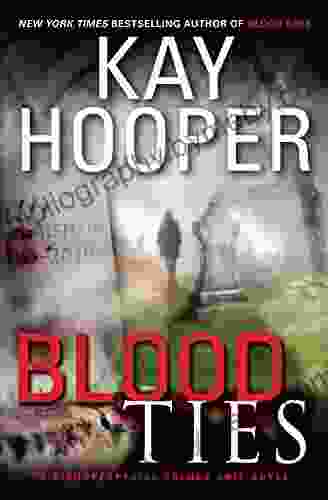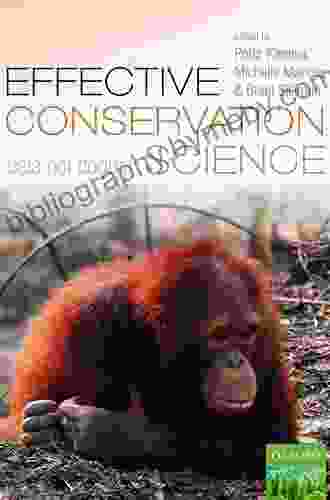Hypothesis Testing: A Visual Introduction to Statistical Significance

Hypothesis testing is a fundamental concept in statistics that allows researchers to make inferences about a population based on a sample. It is used in a wide variety of fields, including medicine, psychology, business, and social sciences.
This visual to hypothesis testing will provide you with a step-by-step guide to the process, using clear and concise language and helpful visuals. You will learn how to formulate a hypothesis, collect data, analyze the results, and draw s.
Hypothesis testing is a statistical method used to determine whether there is sufficient evidence to reject a claim about a population. The claim is called the null hypothesis, and the opposite claim is called the alternative hypothesis.
4.5 out of 5
| Language | : | English |
| File size | : | 7521 KB |
| Text-to-Speech | : | Enabled |
| Screen Reader | : | Supported |
| Enhanced typesetting | : | Enabled |
| Word Wise | : | Enabled |
| Print length | : | 108 pages |
| Lending | : | Enabled |
The null hypothesis is typically stated as "no difference" or "no effect." The alternative hypothesis is typically stated as "a difference" or "an effect."
The steps in hypothesis testing are as follows:
- Formulate the null and alternative hypotheses.
- Collect data from a sample of the population.
- Analyze the data to calculate a test statistic.
- Determine the p-value associated with the test statistic.
- Make a decision about the null hypothesis.
The first step in hypothesis testing is to formulate the null and alternative hypotheses. The null hypothesis is typically stated as "no difference" or "no effect." The alternative hypothesis is typically stated as "a difference" or "an effect."
For example, a researcher might want to test the hypothesis that there is no difference in the average height of men and women. The null hypothesis would be:
H0: μ1 = μ2
where μ1 is the average height of men and μ2 is the average height of women.
The alternative hypothesis would be:
Ha: μ1 ≠ μ2
The next step is to collect data from a sample of the population. The sample should be representative of the population as a whole.
The size of the sample will depend on the desired level of precision and confidence. A larger sample will yield more precise results, but it will also be more expensive and time-consuming to collect.
Once the data has been collected, it is analyzed to calculate a test statistic. The test statistic is a measure of the difference between the sample data and the hypothesized population value.
The choice of test statistic will depend on the type of data being collected and the hypotheses being tested.
The next step is to determine the p-value associated with the test statistic. The p-value is the probability of obtaining a test statistic as extreme as or more extreme than the one that was observed, assuming that the null hypothesis is true.
A low p-value indicates that the observed difference between the sample data and the hypothesized population value is unlikely to have occurred by chance. This suggests that the null hypothesis is false and that the alternative hypothesis is true.
The final step is to make a decision about the null hypothesis. This decision is based on the p-value.
If the p-value is less than the predetermined level of significance (usually 0.05),then the null hypothesis is rejected. This means that there is sufficient evidence to conclude that the alternative hypothesis is true.
If the p-value is greater than or equal to the level of significance, then the null hypothesis is not rejected. This means that there is not sufficient evidence to conclude that the alternative hypothesis is true.
Hypothesis testing is a powerful statistical tool that can be used to make inferences about a population based on a sample. It is a valuable tool for researchers in a wide variety of fields.
This visual to hypothesis testing has provided you with a step-by-step guide to the process. You have learned how to formulate a hypothesis, collect data, analyze the results, and draw s.
If you would like to learn more about hypothesis testing, there are many resources available online and in libraries. You can also take a course in statistics to learn more about this important topic.
Alternative Title:
Hypothesis Testing: A Visual Guide to Understanding Statistical Significance
Meta Description:
This comprehensive visual guide to hypothesis testing will teach you everything you need to know about this essential statistical concept. Learn how to formulate hypotheses, collect data, analyze results, and draw s.
Image Alt Attributes:
- Image 1:Hypothesis testing process A flowchart illustrating the steps involved in hypothesis testing.
- Image 2:Normal distribution A bell curve showing the distribution of test statistics under the null hypothesis.
- Image 3:p-value A graph showing the relationship between p-value and statistical significance.
4.5 out of 5
| Language | : | English |
| File size | : | 7521 KB |
| Text-to-Speech | : | Enabled |
| Screen Reader | : | Supported |
| Enhanced typesetting | : | Enabled |
| Word Wise | : | Enabled |
| Print length | : | 108 pages |
| Lending | : | Enabled |
Do you want to contribute by writing guest posts on this blog?
Please contact us and send us a resume of previous articles that you have written.
 Book
Book Novel
Novel Page
Page Chapter
Chapter Text
Text Story
Story Genre
Genre Reader
Reader Library
Library Paperback
Paperback E-book
E-book Magazine
Magazine Newspaper
Newspaper Paragraph
Paragraph Sentence
Sentence Bookmark
Bookmark Shelf
Shelf Glossary
Glossary Bibliography
Bibliography Foreword
Foreword Preface
Preface Synopsis
Synopsis Annotation
Annotation Footnote
Footnote Manuscript
Manuscript Scroll
Scroll Codex
Codex Tome
Tome Bestseller
Bestseller Classics
Classics Library card
Library card Narrative
Narrative Biography
Biography Autobiography
Autobiography Memoir
Memoir Reference
Reference Encyclopedia
Encyclopedia Victor Davis Hanson
Victor Davis Hanson Sidney Rittenberg
Sidney Rittenberg M Angela Sanders
M Angela Sanders Gayle Bird
Gayle Bird John Seven
John Seven Gabrielle Bossis
Gabrielle Bossis Gilbert Hernandez
Gilbert Hernandez Georgina Pazcoguin
Georgina Pazcoguin Isis Gaillard
Isis Gaillard Gila Leiter
Gila Leiter John Van Der Kiste
John Van Der Kiste Pamela Spiro Wagner
Pamela Spiro Wagner Gary Dillard
Gary Dillard George Morton Jack
George Morton Jack Laura Lemay
Laura Lemay Gerhard Haase Hindenberg
Gerhard Haase Hindenberg George Noory
George Noory Wayne Mullins
Wayne Mullins J M Calverley
J M Calverley Kimberly Smith Lukhard
Kimberly Smith Lukhard
Light bulbAdvertise smarter! Our strategic ad space ensures maximum exposure. Reserve your spot today!

 Victor TurnerDiary of a Very Bad Year: A Profoundly Moving and Witty Tale of Love, Loss,...
Victor TurnerDiary of a Very Bad Year: A Profoundly Moving and Witty Tale of Love, Loss,...
 Kazuo IshiguroEscape into a Realm of Steampunk and Intrigue with Gail Carriger's "Crudrat:...
Kazuo IshiguroEscape into a Realm of Steampunk and Intrigue with Gail Carriger's "Crudrat:...
 Henry Wadsworth LongfellowUnleash the Heart-Pounding Action with Bishop Special Crimes Unit Novel:...
Henry Wadsworth LongfellowUnleash the Heart-Pounding Action with Bishop Special Crimes Unit Novel:... Raymond ParkerFollow ·18.3k
Raymond ParkerFollow ·18.3k Finn CoxFollow ·19.8k
Finn CoxFollow ·19.8k Lucas ReedFollow ·6.3k
Lucas ReedFollow ·6.3k Owen SimmonsFollow ·14k
Owen SimmonsFollow ·14k Neil ParkerFollow ·17.2k
Neil ParkerFollow ·17.2k Harvey HughesFollow ·2.9k
Harvey HughesFollow ·2.9k Enrique BlairFollow ·17.3k
Enrique BlairFollow ·17.3k Glen PowellFollow ·18.4k
Glen PowellFollow ·18.4k

 Brian West
Brian WestSmedley Butler: The Marines and the Making and Breaking...
: A Marine's...

 Gabriel Garcia Marquez
Gabriel Garcia MarquezIschia, Capri, Sorrento, Positano, And Amalfi: An...
Explore the...

 Felix Carter
Felix CarterAdorn Your Little Princess with Fleur Ange's Exquisite...
Welcome to the enchanting...

 Kelly Blair
Kelly BlairUnveiling the Secrets of the Historical Way and Fishermen...
Step into the pages...

 Angelo Ward
Angelo WardKnit the Cutest Thumbless Mittens for Your Little One:...
Prepare to be...
4.5 out of 5
| Language | : | English |
| File size | : | 7521 KB |
| Text-to-Speech | : | Enabled |
| Screen Reader | : | Supported |
| Enhanced typesetting | : | Enabled |
| Word Wise | : | Enabled |
| Print length | : | 108 pages |
| Lending | : | Enabled |








